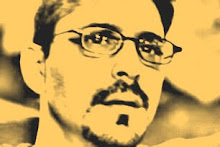Gertruding Avant-math
 Reading through Tender Buttons is always interesting, to say the very least, but today especially, since I decided to explore frequencies. Did you know that "whole" appears twenty-six times throughout the three sections of the text? "Change" appears twenty-one times and "show" (along with "shows") appears a whopping forty-two times. Just this single nexus of "whole," "change," and "show" is enough to keep one sentenced to several hard years of interpretation.
Reading through Tender Buttons is always interesting, to say the very least, but today especially, since I decided to explore frequencies. Did you know that "whole" appears twenty-six times throughout the three sections of the text? "Change" appears twenty-one times and "show" (along with "shows") appears a whopping forty-two times. Just this single nexus of "whole," "change," and "show" is enough to keep one sentenced to several hard years of interpretation.
All this said, "There is no superposition and circumstance, there is hardness and a reason and the rest and remainder. There is no delight and no mathematics."
It seems to me that the whole text is constituted by superpositions and circumstances, delights and--yes indeed--mathematics. What is mathematics but the study of measurement, properties, and relationships? Wouldn't this definition serve to describe avant-garde modernist poetry writ large? It encapsulates, so far as I can see, Pound's ideogrammic method, for example. And Pound called poetry "inspired mathematics." A mathematics that breathes.
As a study, Tender Buttons methodically attends to the stuff of mathematics--measures, properties, and relationships--by making (poiesis) observations. It is a special kind of knowledge arrived at through performance, surely, but useful knowledge nevertheless: "Change a single stream of denting and change it hurriedly, what does it express, it expresses nausea." Or, rather, change expresses or shows the process known as reality. The feeling of nausea is real. Does it need "hardness and a reason" to occur?

